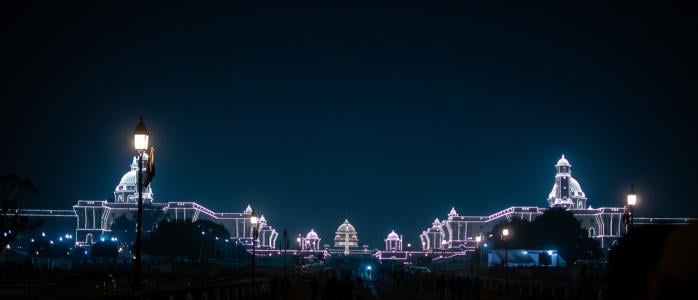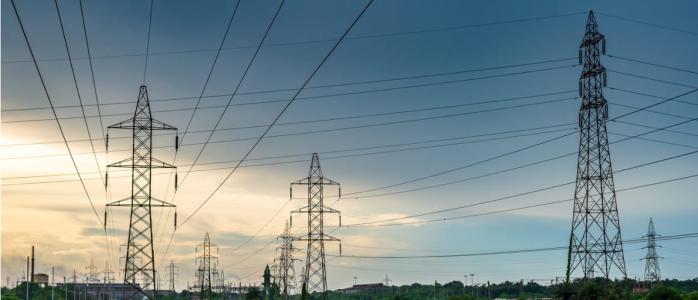



On 03 April 2020, Indian Prime Minister Narendra Modi, in a television address, made a peculiar appeal to the country. He asked the nation of 1.3 billion people to express solidarity in the fight against COVID-19 by switching off lights for 9 minutes, starting at 9 PM, on Sunday, 05 April. The Prime Minister asked the citizens to light candles or diyas (earthern lamp) as an alternative. Apart from the expectation of seeing millions of homes switching off their lights in unison, all eyes were on the grid managers. How much would be the drop in demand? How would the grid cope? Are there enough resources flexible enough to manage the sudden drop and the rise in power demand?
Our analysis found that households responded differently (even erratically) to a well-defined activity. The system operators managed the load by effective scheduling and dispatch of hydro, wind and thermal power generation, besides leveraging load shedding. Further, peri-urban and rural areas bore the disproportionate burden of outages undertaken for load management.
The Council’s smart meters' project
Our team installed smart meters in around 100 urban households of Mathura and Bareilly districts in Uttar Pradesh (UP) in the summer of 2019. These single-phase smart meters capture demand and supply variables at three-minute intervals. This monitoring exercise is part of an ongoing study to investigate residential energy consumption (read our report).The grid managers had estimated a load drop of nearly 13,000 MW, assuming that 80 per cent of Indian households would participate in the event. They anticipated a drop of 50 W and 100 W in lighting load for rural and urban households respectively. However, the actual load reduction was 31,000 MW - more than twice the expected drop.
The events on that Sunday night gave a peek into the challenges and uncertainties in balancing volatile power demand. The Indian grid is likely to witness increasingly volatile demand in future. In the following assessment, we used data from 64 sample households (39 from Bareilly and 25 from Mathura), to gauge how they actually responded to the lights off event.
1. Majority of the sample households responded to the PM’s appeal
Out of the 64 households, 73 per cent participated by turning off some of their appliances, while 7 per cent faced power cuts in the lead-up to the event. The remaining 20 per cent did not participate. A similar analysis by the Prayas Energy Group noted 80 per cent participation among a sample of 95 households in four districts in UP and Maharashtra.
2. The drop in load among participating households was higher than expected
The urban households that participated in the event recorded an average load reduction of 125 W1, which was higher than that expected (100 W) by the system operators. The estimated load drop in the Prayas sample was also higher at 204 W. Though both these samples are not representative of the country, these estimates point at an aggressive response from the households.
3. Many households switched off non-lighting appliances
The maximum lighting load (MLL) for the participating households in the sample was 110 W (average), but we observed an average load reduction of 125 W. A third of the participants reduced load by more than 100 W and in excess of their MLL (Figure 1). This implies that many of them might have switched off non-lighting appliances such as fans.
In fact, four sample households switched off all of their appliances, including refrigerators, displaying a load drop of 140-360 W, as shown in Figure 2. Only one of them switched off their supply from mains (sudden drop in load), while the rest switched off the appliances gradually.
4. Only a few people followed the suggested timings strictly
As against the expectations of a sudden drop and rise in demand over a nine-minute interval, the variations in demand played out over a longer duration. Of the participating households, more than two-third started switching off their appliances well before 9 pm, while 15 per cent lowered their load post 9:12 pm. Less than 10 per cent of the households followed the timings strictly, while more than 70 per cent delayed turning on their appliances (Figure 3). The recovery happened over an extended duration of 25 minutes.
5. Grid managers undertook load shedding to manage the sudden drop in demand
Four sample households reported outages within an hour before the time stipulated for the event, suggesting that suppliers undertook planned outages to manage the load. To prepare for the sudden fall in demand, system operators started ramping down the generators before 9 pm, and commensurately, distribution companies undertook load shedding to match the fall in supply2. Once the household demand started declining, supply was restored in some areas.
We notice that outages were undertaken only in peri-urban areas of the two districts3. While our sample doesn’t cover rural households, we expect a higher incidence of load shedding in rural areas. We confirmed this with the analysis of power quality data from the Electricity Supply Monitoring Initiative (ESMI). We found that nine out of 93 locations experienced an average power cut of 37 minutes between 8 pm and 10 pm on 05 April; seven of these were in rural areas of Uttar Pradesh4.
The system operators did a commendable job in managing the grid during the lights off event. However, to meet the policy goal of 24*7 power for all, load shedding might not be the long-term solution for load management. Discoms would need to step up their efforts on demand forecasting, which would in turn, require better insights into consumer behaviour. The ongoing smart meter installation in the country would help to bridge this gap and provide invaluable insights on household power consumption.
Shalu Agarwal is a Programme Lead and Rachna Pathak is a Consultant at the Council on Energy, Environment and Water. Send your comments to [email protected]
Read Part 2: Urban Households Consumed Less Electricity During Lockdown in Some Parts of India
1MLL is estimated using information about different types of light bulbs and tube-lights in these houses.
2As per POSOCO, all India demand dropped by 15.2 GW between 8:45 pm and 9 pm, followed by a further drop of 15.8 GW between 9 pm and 9:10 pm.
3Of the four households that faced outages, three are located in Farah, while one (house 4) is in Goverdhan – both are notified town areas in Mathura district. NTAs are small and emerging urban areas and face relatively longer power cuts than areas within district headquarter.
4Between 8 pm and 10 pm, no power cuts were observed at these locations on 4th April, even though some outages took place in four locations on 6th April






Add new comment